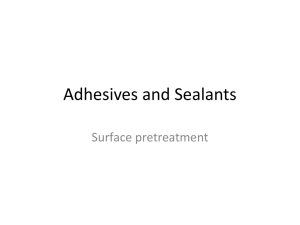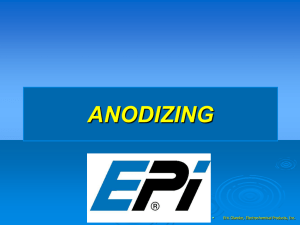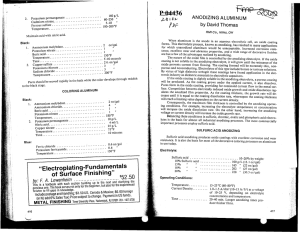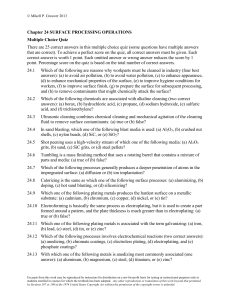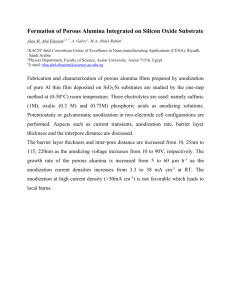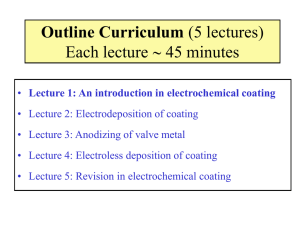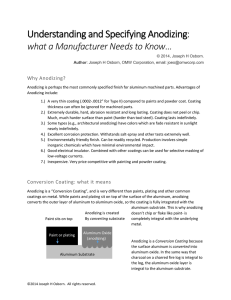High Efficiency Anodizing (HEA) additives that save power and
advertisement
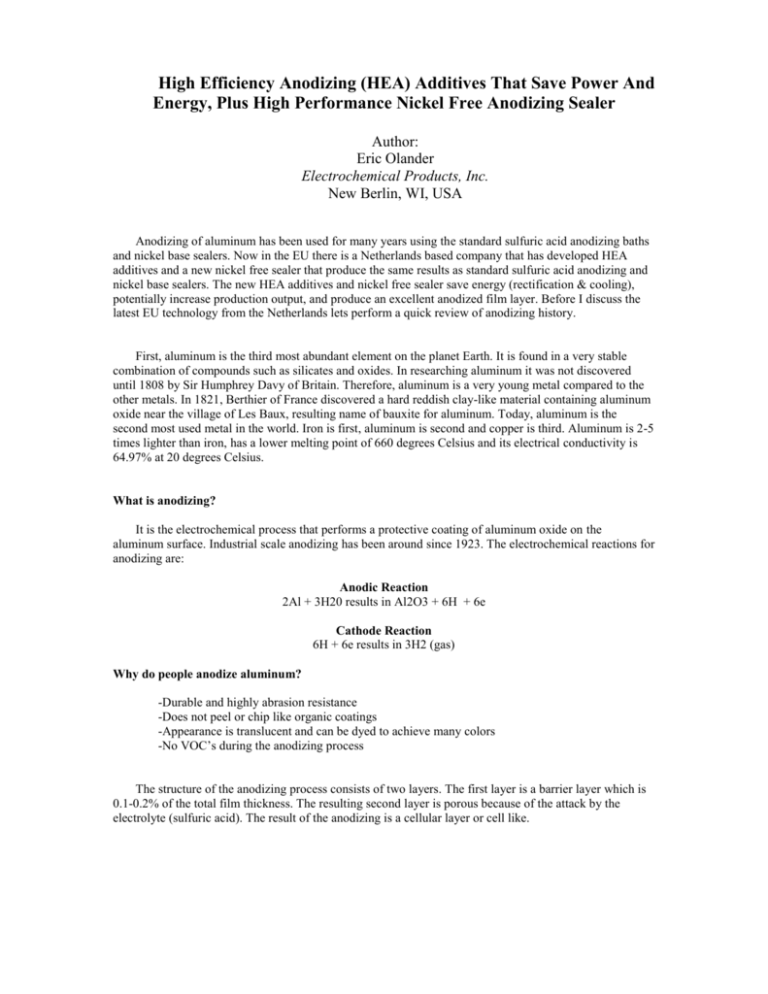
High Efficiency Anodizing (HEA) Additives That Save Power And Energy, Plus High Performance Nickel Free Anodizing Sealer Author: Eric Olander Electrochemical Products, Inc. New Berlin, WI, USA Anodizing of aluminum has been used for many years using the standard sulfuric acid anodizing baths and nickel base sealers. Now in the EU there is a Netherlands based company that has developed HEA additives and a new nickel free sealer that produce the same results as standard sulfuric acid anodizing and nickel base sealers. The new HEA additives and nickel free sealer save energy (rectification & cooling), potentially increase production output, and produce an excellent anodized film layer. Before I discuss the latest EU technology from the Netherlands lets perform a quick review of anodizing history. First, aluminum is the third most abundant element on the planet Earth. It is found in a very stable combination of compounds such as silicates and oxides. In researching aluminum it was not discovered until 1808 by Sir Humphrey Davy of Britain. Therefore, aluminum is a very young metal compared to the other metals. In 1821, Berthier of France discovered a hard reddish clay-like material containing aluminum oxide near the village of Les Baux, resulting name of bauxite for aluminum. Today, aluminum is the second most used metal in the world. Iron is first, aluminum is second and copper is third. Aluminum is 2-5 times lighter than iron, has a lower melting point of 660 degrees Celsius and its electrical conductivity is 64.97% at 20 degrees Celsius. What is anodizing? It is the electrochemical process that performs a protective coating of aluminum oxide on the aluminum surface. Industrial scale anodizing has been around since 1923. The electrochemical reactions for anodizing are: Anodic Reaction 2Al + 3H20 results in Al2O3 + 6H + 6e Cathode Reaction 6H + 6e results in 3H2 (gas) Why do people anodize aluminum? -Durable and highly abrasion resistance -Does not peel or chip like organic coatings -Appearance is translucent and can be dyed to achieve many colors -No VOC’s during the anodizing process The structure of the anodizing process consists of two layers. The first layer is a barrier layer which is 0.1-0.2% of the total film thickness. The resulting second layer is porous because of the attack by the electrolyte (sulfuric acid). The result of the anodizing is a cellular layer or cell like. HEA Anodizing Process HEA anodizing process produces a perfect anodizing layer, while reducing the necessary process energy. HEA additive technology consumes less energy during the anodizing process and less energy consumption for cooling systems. Typically, there are four different anodizing variables that significantly impact the anodizing layer: 1) Concentration and temperature of the sulfuric acid electrolyte; 2) Additives; 3) Anodizing layer thickness and current density; and finally 4) bath agitation and cooling. A standard sulfuric acid anodizing bath contains 150-220 gram/liter of sulfuric acid. If the sulfuric acid concentration is too high, the resulting anodizing layer is soft and offers little abrasion resistance. Higher anodizing temperatures result in a challenge to close the pores in the anodizing layer because of the softer anodizing layer, lower current density, and easy to color ( typically hard to reproduce). A lower temperature results in a harder anodizing layer and better abrasion resistance. A lower current density results in a longer process time and fast coloring of the anodizing layer. Anodizing HEA additives can improve the conductivity of the anodizing process. For example, through the charts in the power point presentation and at the end of the paper , we can see the difference in power consumption at 1.5 A/dm2 at 19 degrees Celsius 1.98 Kwh/m2 and at 25 degrees Celsius the power is 1.70 Kwh/m2. A 6 degree temperature difference results in a 0.28 Kwh/m2 difference. If you are anodizing 2000 m2/day, it results in 560 kwh (14% less energy) or 140,000 kwh a year. At 0.19 $/Kwh ( WE Energies in Milwaukee, WI) that results in saving $26,600 in energy saving costs! Table 1: Anodizing at Different Temperatures Temperature Current Density (amp/m2) Voltage (volts) Process Time (min) Bath Sulfuric Acid (g/l) Aluminum (g/l) Additive (g/l) Voltage times Amperage times Time Watts 19C 150 18 45 25C 150 15.5 45 30C 150 13.7 45 180 5-15 0 160 5-20 20 160 5-20 35 2025 1744 1541 Utilizing the additives results less cooling required and you can increase production. Table 2: Current Density Current Density (amp/m2) Temperature Voltage (volts) Process Time (min) (Same Bath Conditions as Table 1) Watts Energy % difference 150 19C 18 45 180 25C 16.6 36 180 30C 14.8 36 2025 1793 11.5 1598 21 If your rectifier is already at maximum capacity you will save energy costs in cooling and be able to run aluminum levels higher. If the rectifier has excess capacity you can save cooling costs and increase the production in the anodizing tank. Nickel-free Sealing of Anodizing Layer Nickel free sealer can be processed at lower temperature such as 85 degrees Celsius or run at the traditional temperature of 97 degrees Celsius. At the higher temperature, it will seal faster than nickel base sealers. The nickel free sealer passes ISO 3210, the color drop test, admittance and corrosion testing of 1000 hours acetic acid salt spray. Table 3: Nickel Free Sealer Sealer Concentration pH Temperature Immersion Time (min) Normal Sealing Fast Sealing Medium Sealing 1.5 ml/liter 5.8-6.3 85-100 C 1-3 min/micron 97 C 97 C 85 C 3 min/micron 1-2 min/micron 3 min/micron The anodizer can now accomplish the following three objectives: 1) Eliminate a potential carcinogen nickel compound from there facility 2) Seal fast increase production capability without adding onto line saving capital costs 3) Seal at a lower temperature saving 20-25% energy costs Today there is a production proven chemistry from the EU – Netherlands that saves power ($26,600) and cooling costs, plus may increase production in the anodizing depending the rectifier capacity. Plus the anodizer can immediately eliminate nickel from his facility by switching to a nickel free sealer with the added benefit of increasing production or sealing at a lower temperature saving energy costs.
